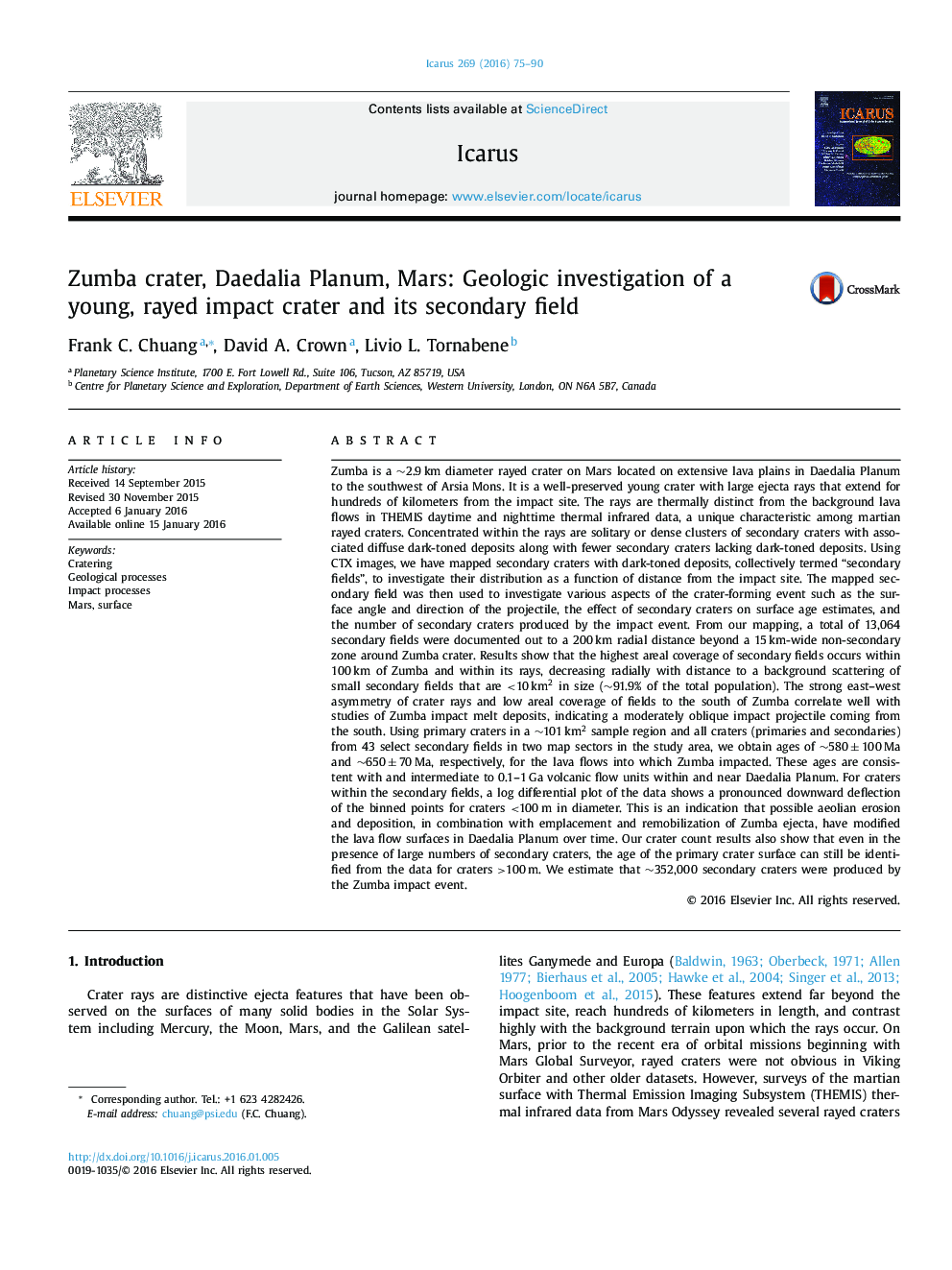| Article ID | Journal | Published Year | Pages | File Type |
|---|---|---|---|---|
| 1772966 | Icarus | 2016 | 16 Pages |
Abstract
Zumba is a â¼2.9 km diameter rayed crater on Mars located on extensive lava plains in Daedalia Planum to the southwest of Arsia Mons. It is a well-preserved young crater with large ejecta rays that extend for hundreds of kilometers from the impact site. The rays are thermally distinct from the background lava flows in THEMIS daytime and nighttime thermal infrared data, a unique characteristic among martian rayed craters. Concentrated within the rays are solitary or dense clusters of secondary craters with associated diffuse dark-toned deposits along with fewer secondary craters lacking dark-toned deposits. Using CTX images, we have mapped secondary craters with dark-toned deposits, collectively termed “secondary fields”, to investigate their distribution as a function of distance from the impact site. The mapped secondary field was then used to investigate various aspects of the crater-forming event such as the surface angle and direction of the projectile, the effect of secondary craters on surface age estimates, and the number of secondary craters produced by the impact event. From our mapping, a total of 13,064 secondary fields were documented out to a 200 km radial distance beyond a 15 km-wide non-secondary zone around Zumba crater. Results show that the highest areal coverage of secondary fields occurs within 100 km of Zumba and within its rays, decreasing radially with distance to a background scattering of small secondary fields that are <10 km2 in size (â¼91.9% of the total population). The strong east-west asymmetry of crater rays and low areal coverage of fields to the south of Zumba correlate well with studies of Zumba impact melt deposits, indicating a moderately oblique impact projectile coming from the south. Using primary craters in a â¼101 km2 sample region and all craters (primaries and secondaries) from 43 select secondary fields in two map sectors in the study area, we obtain ages of â¼580 ± 100 Ma and â¼650 ± 70 Ma, respectively, for the lava flows into which Zumba impacted. These ages are consistent with and intermediate to 0.1-1 Ga volcanic flow units within and near Daedalia Planum. For craters within the secondary fields, a log differential plot of the data shows a pronounced downward deflection of the binned points for craters <100 m in diameter. This is an indication that possible aeolian erosion and deposition, in combination with emplacement and remobilization of Zumba ejecta, have modified the lava flow surfaces in Daedalia Planum over time. Our crater count results also show that even in the presence of large numbers of secondary craters, the age of the primary crater surface can still be identified from the data for craters >100 m. We estimate that â¼352,000 secondary craters were produced by the Zumba impact event.
Related Topics
Physical Sciences and Engineering
Earth and Planetary Sciences
Space and Planetary Science
Authors
Frank C. Chuang, David A. Crown, Livio L. Tornabene,
